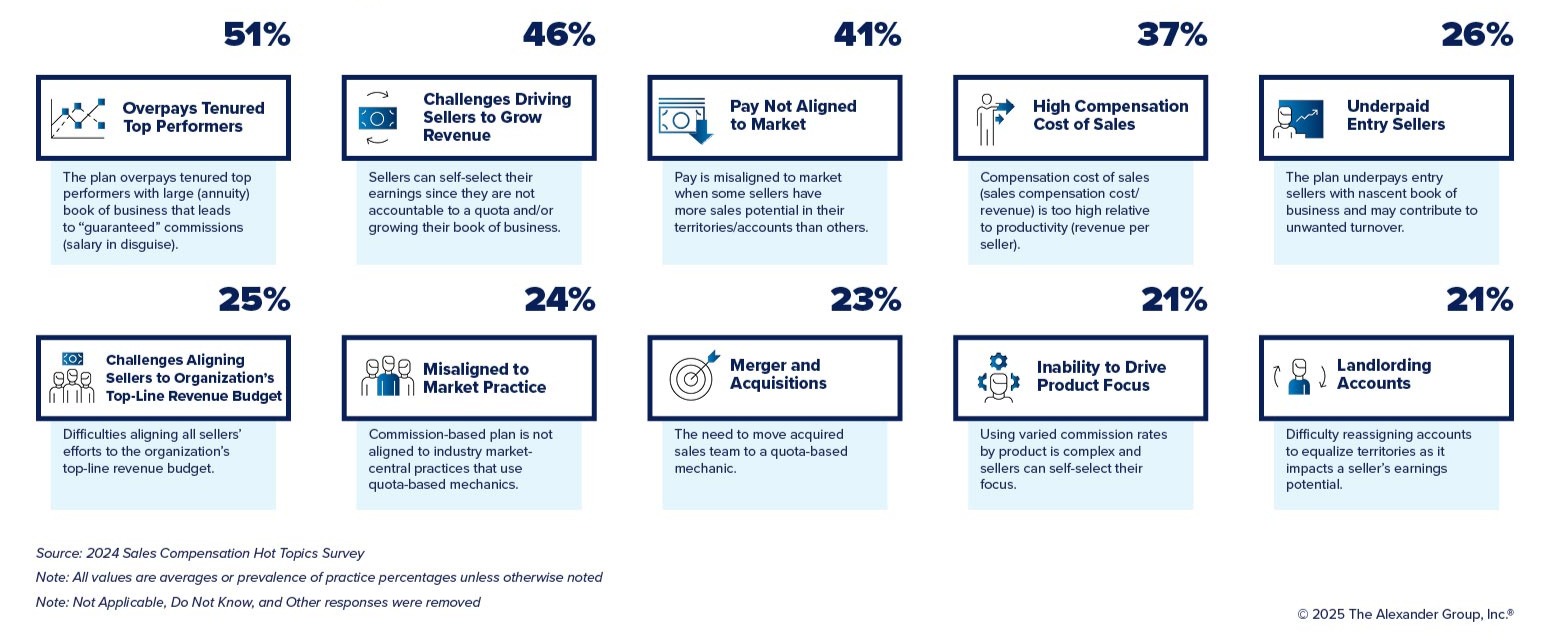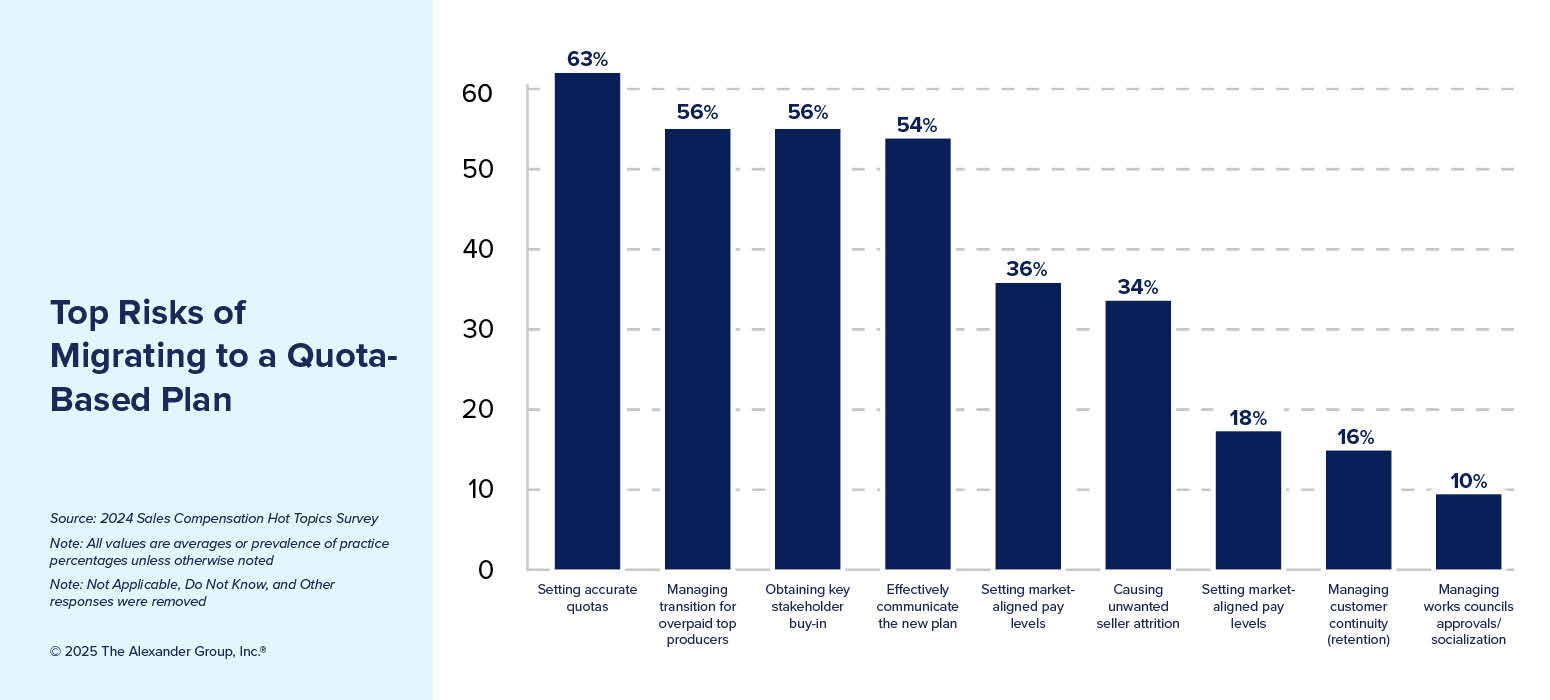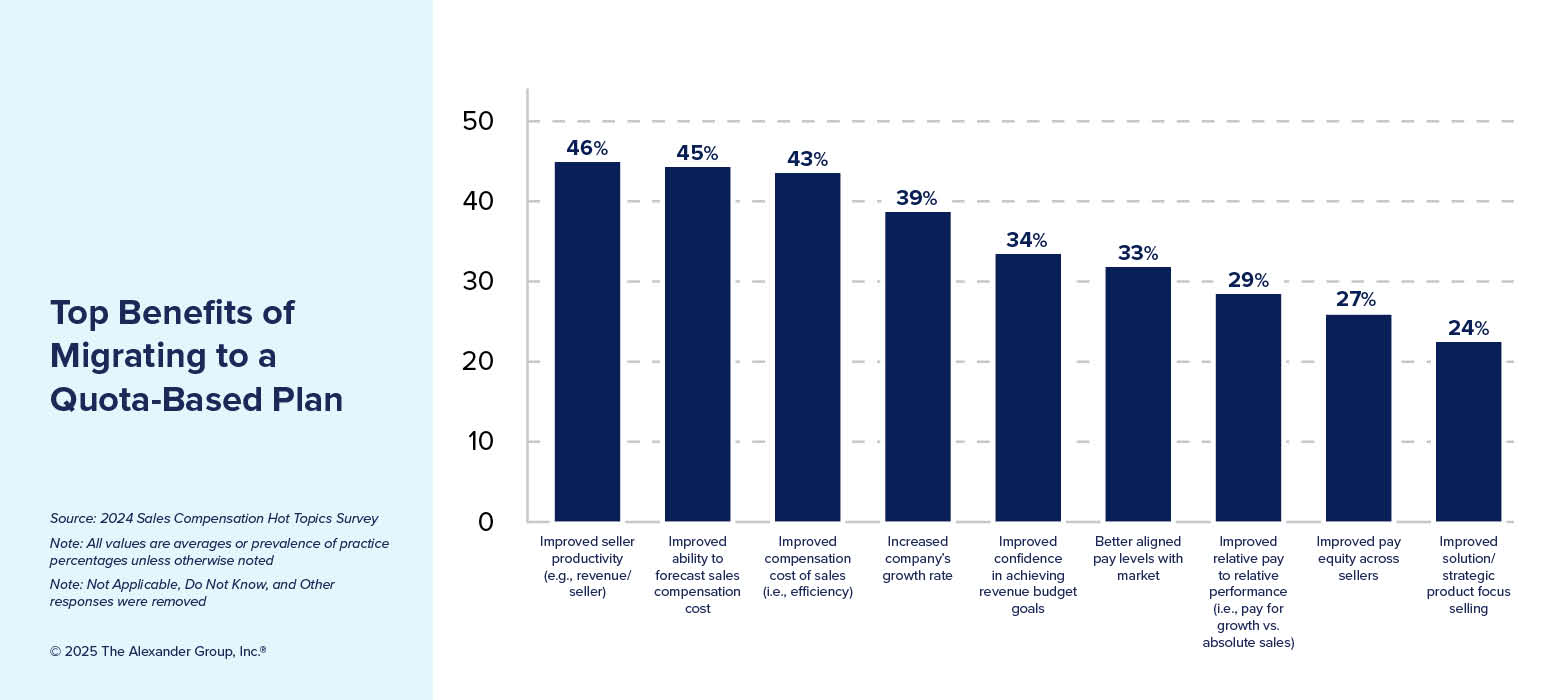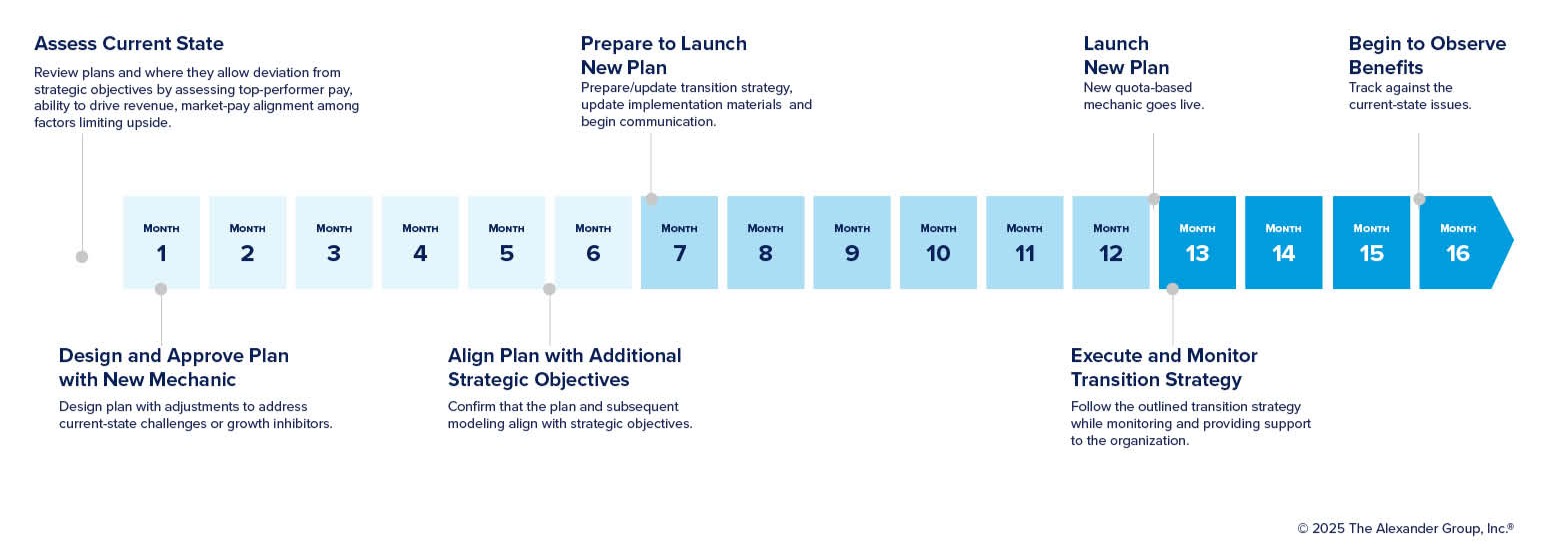For WorldatWork Members
- Sales Performance Management, research
- Sales Performance Management Technology Selection Guide, tool
- Sales Compensation Plan: Organizational Inventory, tool
For Everyone
- Sales Comp ’25, conference
- Will Tariffs Crush Your Sales Quotas? Be Prepared with Comp Solutions, Workspan Daily article
- Sales Comp Considerations: Choosing Between Individual, Team Measures, Workspan Daily article
- Sales Compensation Plans Work (When They Are Designed Correctly), Workspan Daily article
- The Power of Pay-for-Performance Sales Compensation Plans, Workspan Daily article
When does it make sense to transition your sales compensation strategy from a simple flat commission rate to a more complex quota-based plan? Well, like many things in the HR and total rewards world, the answer likely is: It depends.
Many sales functions start with a simple flat commission rate, paying sellers based on a fixed percentage of their executed sales. However, as organizations grow, this approach can become a liability. The key is determining when the benefits of a more complex compensation structure outweigh the costs of keeping things simple.
When Simple Stops Working
Flat commission plans work effectively for many early stage businesses and some sales models. They’re easy to understand, simple to administer and directly tie pay to results. However, recent Alexander Group research revealed 51% of organizations using commission-based plans struggle with overpaying tenured top performers who have built substantial books of business, essentially creating “guaranteed” commissions that function more like disguised salaries than performance-based pay.
The challenges don’t stop there (see Figure 1). Nearly half (46%) of surveyed organizations found that sellers can essentially self-select their earnings since they’re not accountable to growth targets, while 41% reported pay misalignment when some sellers have more sales potential in their territories than others. These issues can create a cascade of problems, including:
- High compensation costs relative to productivity;
- Difficulty driving strategic product focus; and,
- Challenges aligning the entire salesforce to organizational revenue objectives.
Figure 1. Top 10 Common Flat Commission Rate Plan Challenges

The tipping point often comes when leadership realizes they’re paying for activity rather than strategic results. When your top performers are earning substantial commissions simply by maintaining existing relationships rather than driving growth, or when you can’t redirect the salesforce toward new products or markets without completely restructuring commission rates, it’s time to consider more sophisticated alternatives.
The Risks Are Real
Transitioning from commission to quota-based mechanics isn’t without significant risks. Alexander Group survey data showed 63% of responding organizations struggle with setting accurate quotas — a foundational challenge that can make or break the entire initiative. Additionally, 56% face difficulties managing the transition for overpaid top performers, while another 56% struggle to obtain key stakeholder buy-in for the change.
These risks (see Figure 2) are compounded by the potential for unwanted seller attrition. Organizations typically see turnover increase by 2 to 8 percentage points during the transition, with the variation largely dependent on how well the change is managed. The fear of losing top talent often paralyzes organizations, keeping them trapped in suboptimal compensation structures.
Figure 2. Risks of Migrating to a Quota-Based Plan

However, careful planning may help mitigate these risks. Successful transitions likely require:
- Building a robust quota program with clear guiding principles and an affiliated methodology;
- Conducting thorough pay impact analyses; and,
- Implementing comprehensive change management practices.
Organizations that invest in these foundational elements consistently report smoother transitions and better outcomes.
The Upside (Usually) Justifies the Effort
When executed well, the migration to quota-based compensation may deliver substantial benefits (see Figure 3). Nearly half of surveyed organizations reported improved seller productivity following the transition, while 45% saw an improved ability to forecast sales compensation costs. The efficiency gains are equally compelling: 43% achieved better compensation cost-of-sales ratios, and 39% experienced increased organizational growth rates.
Figure 3. Benefits of Migrating to a Quota-Based Plan

Perhaps most importantly, quota-based systems enable strategic focus in ways that flat commission structures simply can’t match. In general, organizations:
- Gain the ability to emphasize different products or services;
- Reward new customer acquisition differently than account expansion; and,
- Align individual performance with corporate objectives. This strategic alignment becomes increasingly valuable as businesses grow, and market conditions evolve.
Managing the Transition
Successful transitions typically follow a deliberate multi-step process taking six to 12 months from design to launch (see Figure 4). The process typically begins with defining pay-for-performance philosophy and plan principles, followed by creating comprehensive pay structures using market data. Organizations typically then build quota-setting programs, complete detailed impact analyses, develop robust transition strategies, and leverage change management principles to communicate and roll out new plans.
Figure 4. Typical Time-to-Execution Timeline

Special attention should be paid to top performers during this transition. Alexander Group research showed 80% of organizations provide some form of permanent incentive protection for these critical employees, whether through more lucrative pay curves, increased target compensation or alternative transition timelines. The likely key is balancing retention with the overall objectives of the new compensation structure.
The Decision Framework
The decision to move beyond flat commission ultimately should depend on three critical factors:
- Your organization’s growth stage;
- The complexity of your sales process; and,
- Your ability to set fair, achievable quotas.
Early stage organizations with simple transactional sales may thrive with commission structures indefinitely. However, organizations with complex sales cycles, strategic product portfolios or inequitable territories often find that the benefits of quota-based systems far outweigh the implementation challenges.
The transition isn’t about adding complexity for its own sake. It’s about building compensation systems that scale with your business and drive the behaviors that matter most for long-term success.
The Exception: Where Flat Commission Rate Plans Work
Flat commission rate structures do remain the right choice for many organizations. Those with highly transactional sales, uniform territory potential, simple product portfolios or limited quota-setting capabilities may find the administrative burden and risks of quota-based systems outweigh their benefits. The key is honest assessment: If your current commission structure effectively drives needed behaviors without creating the common pitfalls outlined above, maintaining simplicity may be your best strategy. In other words, don’t overcomplicate it if you don’t have to.
Editor’s Note: Additional Content
For more information and resources related to this article, see the pages below, which offer quick access to all WorldatWork content on these topics:
#1 Total Rewards & Comp Newsletter
Subscribe to Workspan Weekly and always get the latest news on compensation and Total Rewards delivered directly to you. Never miss another update on the newest regulations, court decisions, state laws and trends in the field.








